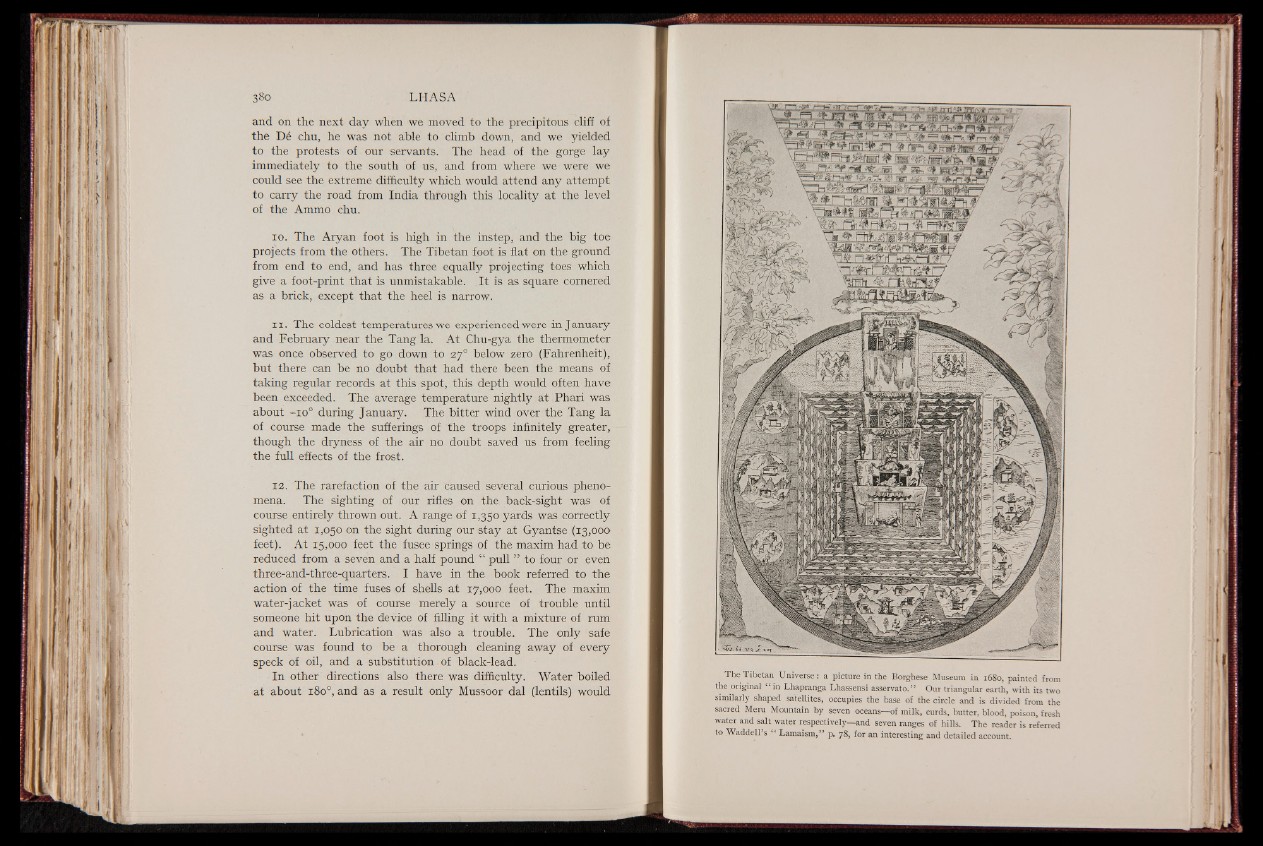
and on the next day when we moved to the precipitous cliff of
the D6 chu, he was not able to climb down, and we yielded
to the protests of our servants. The head of the gorge lay
immediately to the south of us, and from where we were we
could see the extreme difficulty which would attend any attempt
to carry the road from India through this locality at the level
of the Ammo chu.
10. The Aryan foot is high in the instep, and the big toe
projects from the others. The Tibetan foot is flat on the ground
from end to end, and has three equally projecting toes which
give a foot-print that is unmistakable. It is as square cornered
as a brick, except that the heel is narrow.
11. The coldest temperatures we experienced were in January
and February near the Tang la. At Chu-gya the thermometer
was once observed to go down to 270 below zero (Fahrenheit),
but there can be no doubt that had there been the means of
taking regular records at this spot, this depth would often have
been exceeded. The average temperature nightly at Phari was
about -io° during January. The bitter wind over the Tang la
of course made the sufferings of the troops infinitely greater,
though the dryness of the air no doubt saved us from feeling
the full effects of the frost.
12. The rarefaction of the air caused several curious phenomena.
The sighting of our rifles on the back-sight was of
course entirely thrown out. A range of 1,350 yards was correctly
sighted at 1,050 on the sight during our stay at Gyantse (13,000
feet). At 15,000 feet the fusee springs of the maxim had to be
reduced from a seven and a half pound “ pull ” to four or even
three-and-three-quarters. I have in the book referred to the
action of the time fuses of shells at 17,000 feet. The maxim
water-jacket was of course merely a source of trouble until
someone hit upon the device of filling it with a mixture of rum
and water. Lubrication was also a trouble. The only safe
course was found to be a thorough cleaning away of every
speck of oil, and a substitution of black-lead.
In other directions also there was difficulty. Water boiled
at about 180°, and as a result only Mussoor dal (lentils) would
The Tibetan Universe: a picture in the Borghese Museum in 1680, painted from
the original “ in Lhapranga Lhassensi asservato. ” Our triangular earth, with its two
similarly shaped satellites, occupies the base of the circle and is divided from the
sacred Meru Mountain by seven oceans— of milk, curds, butter, blood, poison, fresh
water and salt water respectively—and seven ranges of hills. The reader is referred
to Waddell’s' “ Lamaism,” p. 78, for an interesting and detailed account.